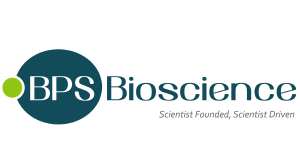Chemi-Verse™ CDK5/p25 Kinase Assay Kit
Chemi-Verse™ CDK5/p25 Kinase Assay Kit
SKU
BPS82814
Packaging Unit
96 reactions
Manufacturer
BPS Bioscience
Availability:
loading...
Price is loading...
Products from BPS Bioscience require a minimum order value above 400€
Background: CDK5 (cyclin dependent kinase 5) is a serine/threonine protein kinase of the CDK family of proteins. It is expressed mainly in the brain, where it is linked to neuronal development and differentiation. CDK5 is an unconventional CDK protein, as its partners are the non-cyclin proteins p35 (early 35 kDa protein) and p39. p35 and p39 are myristoylated and recruit CDK5 to the cell membrane. Recent findings identified new roles for CDK5 in the nervous system, such as participating in neurite outgrowth, synaptic plasticity and homeostasis and circadian rhythm. Accumulation of p25, a fragment of p35, in neurons creates dysregulation of CDK5 function, and can result in Alzheimer's disease (AD), Parkinson's disease (PD), ALS (amyothropic lateral sclerosis) and Huntington's disease (HD). CDK5 also participates in T cell activation, and overexpression of this protein has been found in cancer samples. It acts on increasing brain tumor stem cell numbers and can lead to upregulation of PD-L1 (programmed death ligand-1) and increase cancer cell immune evasion. Inhibition of CDK5 via small molecules and peptides is a promising area of research that can benefit patients with cancer with neurodegenerative disorders.
Contraindications: The final concentration of DMSO in the assay should not exceed 1%.
Description: The Chemi-Verse™ CDK5/p25 Kinase Assay Kit is designed to measure CDK5/p25 serine/threonine kinase activity for screening and profiling applications using ADP-Glo™ as a detection reagent. The assay kit comes in a convenient 96-well format, with enough purified recombinant CDK5/p25 (amino acids 99-307(end)), kinase substrate, ATP and kinase assay buffer for 100 enzyme reactions.
Storage Stability: Store at -80°C. This assay kit will perform optimally for up to 6 months from date of receipt when the materials are stored as directed.
Uniprot: Q00535
Warnings: Avoid freeze/thaw cycles
Biosafety Level: Not applicable (BSL-1)
References: Pao P.0C. and Tsai L.-H., 2021 Journal of Biomedical Medicine 28:79.
Background: CDK5 (cyclin dependent kinase 5) is a serine/threonine protein kinase of the CDK family of proteins. It is expressed mainly in the brain, where it is linked to neuronal development and differentiation. CDK5 is an unconventional CDK protein, as its partners are the non-cyclin proteins p35 (early 35 kDa protein) and p39. p35 and p39 are myristoylated and recruit CDK5 to the cell membrane. Recent findings identified new roles for CDK5 in the nervous system, such as participating in neurite outgrowth, synaptic plasticity and homeostasis and circadian rhythm. Accumulation of p25, a fragment of p35, in neurons creates dysregulation of CDK5 function, and can result in Alzheimer's disease (AD), Parkinson's disease (PD), ALS (amyothropic lateral sclerosis) and Huntington's disease (HD). CDK5 also participates in T cell activation, and overexpression of this protein has been found in cancer samples. It acts on increasing brain tumor stem cell numbers and can lead to upregulation of PD-L1 (programmed death ligand-1) and increase cancer cell immune evasion. Inhibition of CDK5 via small molecules and peptides is a promising area of research that can benefit patients with cancer with neurodegenerative disorders.
Contraindications: The final concentration of DMSO in the assay should not exceed 1%.
Description: The Chemi-Verse™ CDK5/p25 Kinase Assay Kit is designed to measure CDK5/p25 serine/threonine kinase activity for screening and profiling applications using ADP-Glo™ as a detection reagent. The assay kit comes in a convenient 96-well format, with enough purified recombinant CDK5/p25 (amino acids 99-307(end)), kinase substrate, ATP and kinase assay buffer for 100 enzyme reactions.
Storage Stability: Store at -80°C. This assay kit will perform optimally for up to 6 months from date of receipt when the materials are stored as directed.
Uniprot: Q00535
Warnings: Avoid freeze/thaw cycles
Biosafety Level: Not applicable (BSL-1)
References: Pao P.0C. and Tsai L.-H., 2021 Journal of Biomedical Medicine 28:79.
| SKU | BPS82814 |
|---|---|
| Manufacturer | BPS Bioscience |
| Manufacturer SKU | 82814 |
| Package Unit | 96 reactions |
| Quantity Unit | PAK |
| Product information (PDF) | Download |
| MSDS (PDF) |
|

 Deutsch
Deutsch






